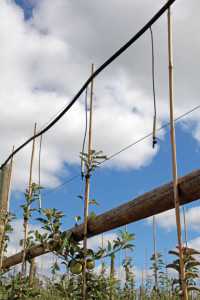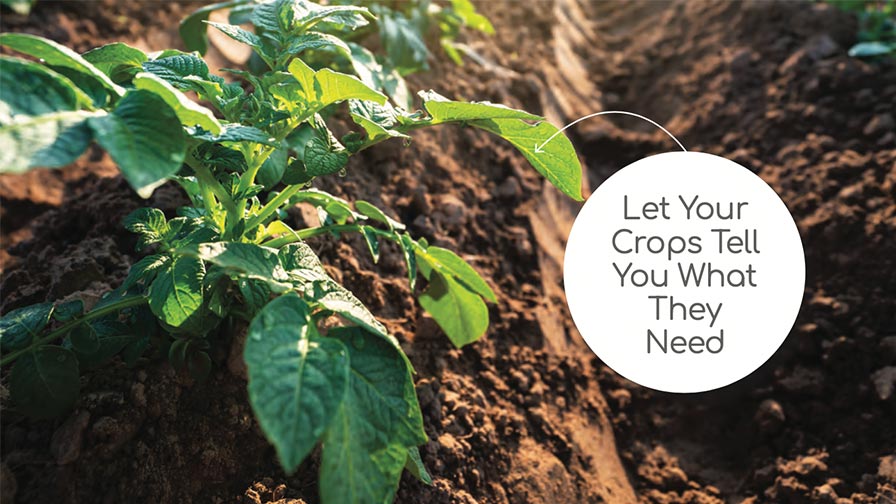Using Micro Sprayers For Research In Apples

Micro sprinklers are pictured on a newly established high-density orchard of Gala and Honeycrisp. (Photo credit: Christina Herrick)
With more producers growing apples in a high-density fruiting wall, the possibility of adding micro sprinklers to the already existing trellising can be advantageous. With micro sprayers comes the possibility of adding foliar applicants through the irrigation sprinkler system.
Brian Levene, specialty crops research manager for Agro-Culture Liquid Fertilizers, talks about the research being conducted with the company’s products at Agro-Culture Liquid Fertilizers’ North Central Research Station (NCRS) in St. Johns, MI. Levene is studying the use of foliar applicants through micro sprayers on a newly established high-density orchard of Gala and Honeycrisp on Bud-9 rootstock, using the solid set canopy delivery system, a Specialty Crop Research Initiative project involving Michigan State University.
Levene said he saw a need for research on how fertility programs impact the size and color of Galas. “My belief is that a combination of soil and foliar fertility may allow growers the ability to optimize these characteristics and increase the value of the apples they produce,” said Levene. With Honeycrisp, bitter pit is a continual problem for growers. Levene said, “Symptoms (of bitter pit) can affect the appearance and the shelf life and storability of this apple variety. With this variety, a multitude of calcium products, application timings, and application methods will be evaluated in an effort to address this quality concern.”
Levene’s orchard has a border row of five varieties to make comparisons between Agro-Culture’s program and a conventional fertility program. A second border row has 2-foot plantings of Gala and Honeycrisp so Levene can study management of the varieties. The orchard is a tall spindle with 3.5 feet between plantings and 11-foot rows. Each test plot has 10 trees. Levene said he has four replications of each treatments for both Gala and Honeycrisp and a total of 30 treatments per variety. “Right now I have 25 unique treatments in each variety and five plots that I am maintaining with a base level of fertilizer so they can be used in the future for new ideas or experimental products without worries of complications.”
Levene implemented a solid set canopy delivery system so that his research treatments could be applied in an easier matter and so that he was conducting his research on a modern orchard. (This system was featured in the February issue of American Fruit Grower; see “Update On Solid Set Canopy Delivery System.”)
“Working with MSU has provided me with (information about the solid set canopy delivery system) as well as potentially giving them an additional location to test and evaluate this type of system on a slightly larger scale than would be possible at the university research stations,” said Levene.
The orchard is in its second season, and Levene is looking to 2014 for a complete evaluation of the plots. Levene also said that there are three apple trials being conducted in Washington, with the possibility of some more Eastern trials being added. “We are going to be doing yield evaluations as well as growth evaluations of the trees’ caliper, height, and number of branches so we can have an assessment of the tree as well as the fruit they produce,” said Levene.
With the research, Levene said, “I am hoping to show how important fertilizer type, rate, and application timing are for producing high yields. Secondly, I would like to show that changing some or all of these factors can also be used to promote apple quality and maximize value per acre with considerations for storage evaluations as well.”










